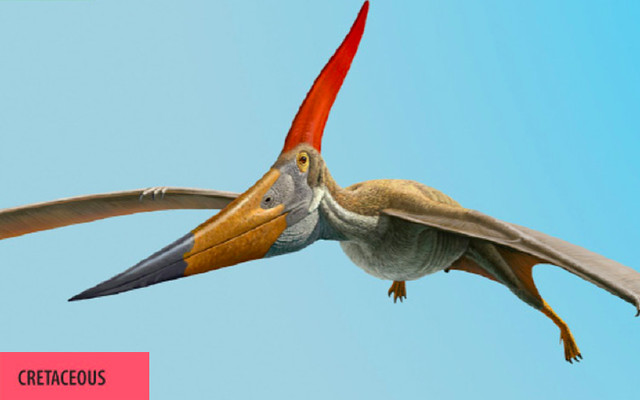Pteranodon (/tɨˈrænədɒn/; from Greek πτερόν (“wing”) and ἀνόδων (“toothless”)) is a genus of pterosaurs which included some of the largest known flying reptiles, with wingspans over 6 metres (20 ft). It existed during the late Cretaceousgeological period of North America in present day Kansas, Alabama, Nebraska, Wyoming, and South Dakota. More fossilspecimens of Pteranodon have been found than any other pterosaur, with about 1,200 specimens known to science, many of them well preserved with nearly complete skulls and articulated skeletons. It was an important part of the animal community in the Western Interior Seaway.[1]
Pteranodon was not a dinosaur. By definition, all dinosaurs belong to the groups Saurischia and Ornithischia, which exclude pterosaurs. Nevertheless, Pteranodon is frequently featured in dinosaur books and is strongly associated with dinosaurs by the general public.[2]
Pteranodon species are extremely well represented in the fossil record, allowing for detailed descriptions of their anatomy and analysis of their life history. Over 1,000 specimens have been identified, though less than half are complete enough to give researchers good information on the anatomy of the animal. Still, this is more fossil material than is known for any other pterosaur, and it includes both male and female specimens of various age groups and, possibly, species.[2]
(From Wikipedia, February 2015)




